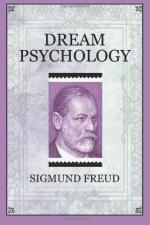The direction taken by the condensations of the dream is prescribed on the one hand by the true foreconscious relations of the dream thoughts, an the other hand by the attraction of the visual reminiscences in the unconscious. The success of the condensation work produces those intensities which are required for penetration into the perception systems.
2. Through this free transferability of the intensities, moreover, and in the service of condensation, intermediary presentations—compromises, as it were—are formed (cf. the numerous examples). This, likewise, is something unheard of in the normal presentation course, where it is above all a question of selection and retention of the “proper” presentation element. On the other hand, composite and compromise formations occur with extraordinary frequency when we are trying to find the linguistic expression for foreconscious thoughts; these are considered “slips of the tongue.”
3. The presentations which transfer their intensities to one another are very loosely connected, and are joined together by such forms of association as are spurned in our serious thought and are utilized in the production of the effect of wit only. Among these we particularly find associations of the sound and consonance types.
4. Contradictory thoughts do not strive to eliminate one another, but remain side by side. They often unite to produce condensation as if no contradiction existed, or they form compromises for which we should never forgive our thoughts, but which we frequently approve of in our actions.
These are some of the most conspicuous abnormal processes to which the thoughts which have previously been rationally formed are subjected in the course of the dream-work. As the main feature of these processes we recognize the high importance attached to the fact of rendering the occupation energy mobile and capable of discharge; the content and the actual significance of the psychic elements, to which these energies adhere, become a matter of secondary importance. One might possibly think that the condensation and compromise formation is effected only in the service of regression, when occasion arises for changing thoughts into pictures. But the analysis and—still more distinctly—the synthesis of dreams which lack regression toward pictures, e.g. the dream “Autodidasker—Conversation with Court-Councilor N.,” present the same processes of displacement and condensation as the others.




